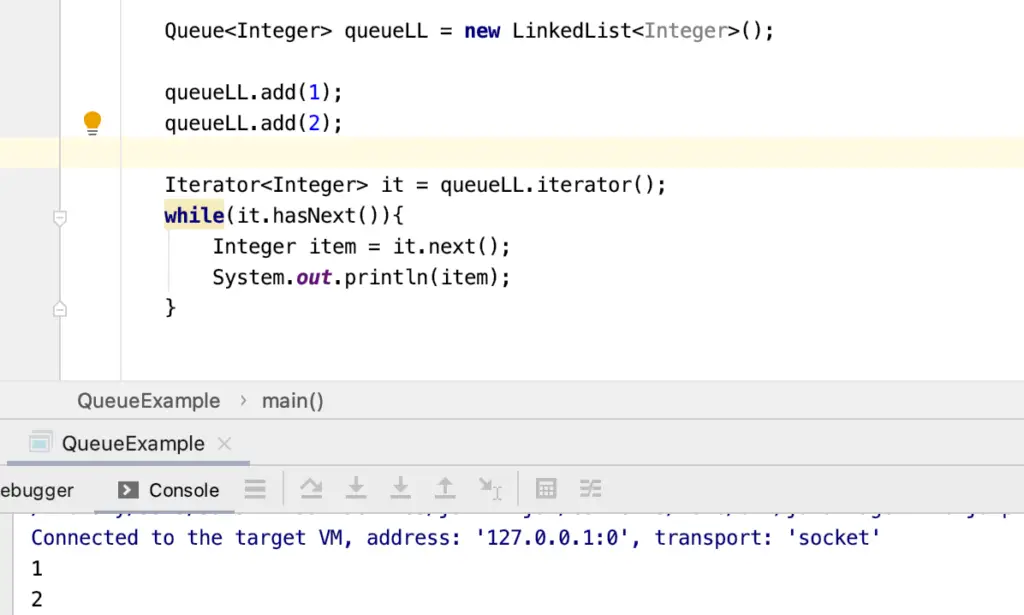
#Queue in java code
Other code may actually be able to modify the underlying collection. Indeed, unmodifiable collections are often wrappers around a modifiable collection that other code can still access and modify. Unmodifiable collections are not necessarily immutable. Sequential access collections can be easier to extend but take more time to search.īeginning programmers may find it difficult to grasp the difference between unmodifiable and immutable collections. In sequential access collections, you must progress through all prior elements to reach a given element. sequential access: If a collection allows for the indexing of individual elements, it is random access. variable size: These terms refer only to the size of the collection and make no indication as to whether the collection is modifiable or mutable. Collections that can guarantee that no changes are visible with the Collection objects are immutable, whereas unmodifiable collections are collections that do not allow modification operations such as ‘add’ or ‘clear.’ While there are situations where unmodifiable collections may still change due to access by other code, immutable collections prevent such changes. immutable: Immutable collections cannot be modified after creation. unmodifiable: As these terms suggest on their face, different collections may or may not support modification operations. In working with collections, developers need to be familiar with and understand some specific collections-related terminology: Sets, Queues, Lists, and Maps each have descendants, such as sorted sets ( ) and navigable maps ( ). Maps are not collections in the truest sense as they don’t extend collection interfaces, but developers can manipulate Maps as if they are collections. In addition to sets, there are queues ( ) and maps ( ). The Set interface inherits its methods from Collection () and contains only those methods. A Set is a collection that does not allow for duplicate elements and does not store elements in any particular order. Developers can work with collections in much the same way they work with other data types, performing common tasks such as searches or manipulating the collection's contents.Īn example of a collection in Java is the Set Collection interface (). Java collections are simply data structures representing a group of Java objects.


Understanding the distinction between Java collections and the Java Collections Framework is essential.

The JCF provided a standardized interface and common methods for collections, reduced programming effort, and increased the speed of Java programs. One early advancement came in 1998 when Java introduced the Collection Framework (JCF), which simplified working with Java objects. Throughout its life, Java has undergone substantial evolution. The platform to power synchronized digital experiences in realtime.


 0 kommentar(er)
0 kommentar(er)
